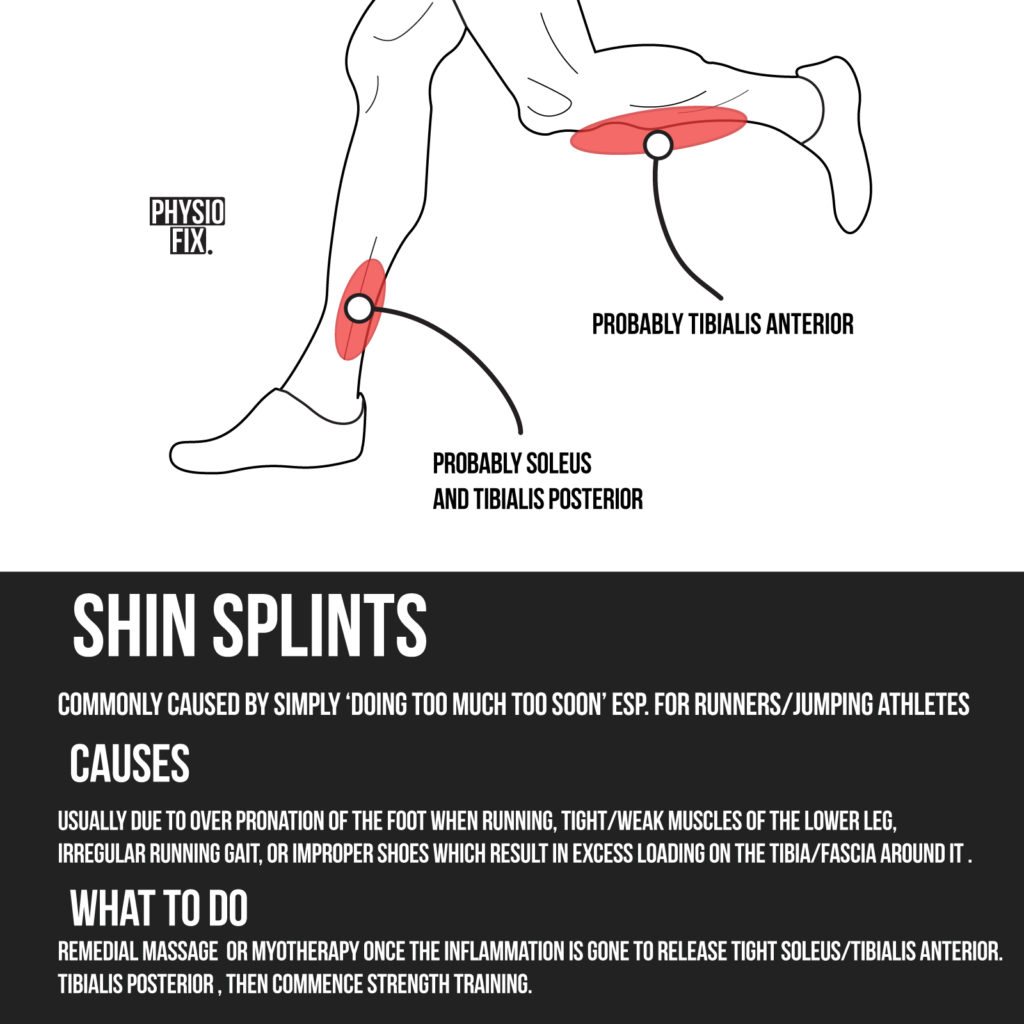It’s a runner’s worst nightmare – shin splints, also known as medial tibial stress syndrome and/or anterior tibial stress syndrome. With Run Melbourne quickly approaching, we are suspecting a spike in runners coming into to our clinic for myo therapy and remedial massage in South Melbourne.
Generally speaking, both tibial stress syndromes are caused simple by doing too much too soon, sudden changes of training programs, transitioning between sports (like cycling which is non-weight-bearing, to running which is entirely weight-bearing) and a rapid increase in training load. It’s usually felt as pain, sometimes sharp pain, on the lower part of the medial tibia, medial tibial stress syndrome, or the front of the shins, anterior tibial stress syndrome.
Although there has been tonnes of research done around medial tibial stress syndrome, there is yet to be a definitive answer as to what causes it. This is due to the fact that there is really no one cause – it is multifactorial.

It’s been widely accepted that MTSS is due to over-pronation of the foot when running or landing, poor running shoes, irregular running gait and transfer of loading onto the tibia because of weak or tight lower leg muscles. Weak or tight lower leg muscles like the soleus, tibialis posterior and tibialis anterior, means that the muscles cannot take the full load of shock absorption and thus transmit the forces to other parts of the leg i.e. the tibia bone and its periosteum.
The periosteum, the layer of vascular connective tissue surrounding the bone and where the muscle attaches to the bone, takes most of the stress and is where the pain is felt- the periosteum has a lot of nerve endings in it making shin splints so painful. Think of the periosteum as the glue between the muscle and the bone. When the muscles around the periosteum are overused, weak, fatigued or tight, the periosteum has to pick up the slack causing it to become irritated and inflamed.
It’s common that pain that is felt on the front of the shins, anterior tibial stress syndrome, is generally due to weak or tight anterior tibialis muscle that pulls on the periosteum of the anterior tibia whereas pain felt on the distal, medial lower third of the leg is generally due to weak or tight soleus and tibialis posterior muscles.
This pain can be debilitating for some and it usually takes a minimum of 2 weeks for pain to subside and it could be 6 weeks or longer to get back into running comfortably.

Although there are many ways of treating shin splints, it’s most important to reduce the inflammation and then release the tension in the lower leg muscles to be able to begin strength training, rehabilitation or simply get back into running.
Since the muscles generally associated with shin splints are deep muscles of the lower leg, remedial massage, myotherapy or deep tissue massage is recommended over foam rolling or static stretching as therapists are able to more effectively isolate and reach the deeper muscles. Not only do remedial massage and myotherapy help to stretch the muscle, but techniques such as deep transverse friction can be used to release tightness, trigger point therapy could be used to reduce scar tissue build up, light massage for circulation of blood and lymph as well as fascial release methods to loosen the fascial sheaths around the calf muscles.
We would encourage those who are wanting to get back into running or training to book in with one of our highly qualified Melbourne myotherapists or Melbourne remedial massage therapists, or feel free to contact us with any questions.

